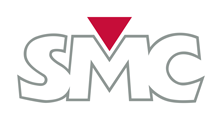Understanding the IEC 61850 Protocol: A New Era in Electrical Protection and Control
Introduction
The IEC 61850 protocol is an international standard designed for substation automation systems (SAS). It enables seamless communication between Intelligent Electronic Devices (IEDs), regardless of the manufacturer, providing interoperability and efficiency. Today, IEC 61850 is widely used in medium- and high-voltage substations and is gaining importance in renewable energy facilities like wind and solar farms.
For engineers and utilities, IEC 61850 represents more than just a protocol; it is the foundation for modern protection schemes that require precision, speed, and robust testing with tools such as a relay test set or a secondary injection test set.
The History of IEC 61850: Origins and Evolution
In the late 1990s, the International Electrotechnical Commission (IEC) recognized the need for a unified communication standard for substations. Traditional protection protocols lacked interoperability, leading to inefficiencies and higher costs.
First published in 2003, IEC 61850 shifted the industry from hardwired systems to Ethernet-based digital communication, paving the way for intelligent substations. Since then, the standard has evolved, focusing on cybersecurity, interoperability, and renewable integration.
Global Adoption of IEC 61850
-
Europe: Pioneers in adoption, especially Germany and France, where digital substations and renewable integration are priorities.
-
North America: Selective adoption, mainly in large substations and renewable projects.
-
Asia-Pacific: China and Japan lead rapid adoption due to growing energy demand and urbanization.
-
Middle East and Africa: Growing implementation in new infrastructure and renewable projects.
Benefits and Risks of IEC 61850 in Digital Protection
Advantages
-
Interoperability: Devices from different vendors work seamlessly.
-
Scalability: Systems can expand with modular architectures.
-
Real-time communication: Fast and accurate protection, essential for fault isolation.
-
Cost efficiency: Reduces complex wiring and hardware rewiring.
Risks
-
Cybersecurity threats: Susceptible to cyber-attacks and unauthorized access.
-
Complex integration: Requires high technical expertise.
-
Network dependency: Communication delays can compromise protection.
Testing Methodologies for IEC 61850 Protection Schemes
Testing is essential to ensure reliable performance under all conditions. Common methods include:
-
Conformance Testing: Validates that IEDs comply with IEC 61850 standards.
-
Interoperability Testing: Ensures devices from different manufacturers work together.
-
Functional Testing: Uses a relay test unit to simulate faults and validate protection responses.
-
Network Performance Testing: Verifies latency, packet loss, and reliability.
-
Cybersecurity Testing: Identifies vulnerabilities with penetration tests.
Engineers often rely on secondary injection test sets, three phase relay test sets, and single phase relay test sets to perform accurate functional and interoperability testing.
Conclusion
The IEC 61850 protocol has revolutionized electrical protection and control by enabling smarter, faster, and more interoperable substations. While cybersecurity and integration remain challenges, rigorous relay testing methodologies ensure reliability.
As global adoption continues, IEC 61850 stands at the core of resilient, efficient, and future-ready power systems.

